In August 2020, Margaret Nazon, a Northwest Territories beader for whom I was acting as business manager, forwarded me an email, saying, “I’m very interested in this opportunity.”
When I read the email, I almost dropped my phone.
Stephen Loring, an Arctic anthropologist with the Smithsonian’s National Museum of Natural History, was requesting a commission from Margaret for a planned exhibit called “Lights Out: Recovering Our Night Sky.” He’d seen Margaret’s beaded interpretations of cosmic phenomena, become a big fan, and wanted a picture of the Milky Way, to show visitors how the sky looks at night where Margaret lives, in the village of Tsiigehtchic, NWT.
Over the next two and a half years, through numerous e-mails, personal and professional challenges, and exhibit delays, the show finally opened in March 2023.
Margaret is not a big city person, and opted not to visit the exhibit in person. So I said I would go as eyes and ears for both of us, and share with her as many of my impressions as I could.
Stephen Loring became my gracious host for my time in Washington. The morning I visited the exhibit, he got me into the exhibit before the museum opened, so that I could have some quiet alone time to appreciate the displays, and especially Margaret’s piece.
As you might expect from the exhibit’s theme, the space was dimly lit, beckoning visitors to experience the wonders that are only possible in low light situations.
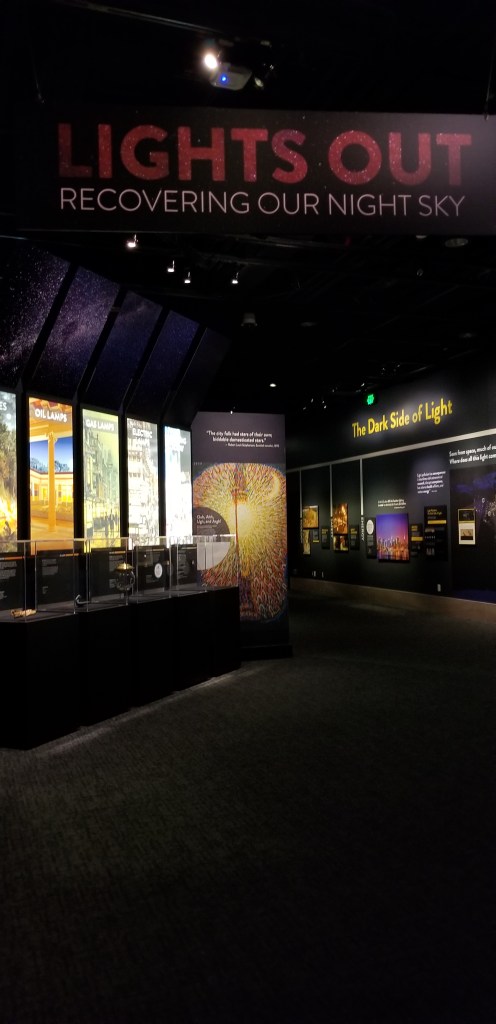
My immediate urge on entering the space was to race through all the information and images that had been placed before Margaret’s piece, and get to the piece de resistance right away. But I held myself back, realizing that the introductory materials would likely enhance my appreciation of her artwork by giving it context. So, I tried my best to concentrate on the images and read the information about how night skies are disappearing, and the impact of that on humans and animals. Amazing to find out that almost 80% of the world has never seen the Milky Way, and that light pollution is negatively affecting insect populations, bird migration, turtle reproduction, and the life cycle of countless other species.
At the start of the exhibit section on how various cultures have viewed the night sky, I watched a great little animated film on the Greek, Maori, and Ainu stories of the Pleiades. Partway through, I glanced over to my left, and glimpsed Margaret’s piece. Keeping my mind of the documentary became a little challenging after that.
By this time, the exhibit had opened to the general public, so I knew my window of opportunity to spend some contemplation time with Milky Way Starry Night 2 was narrowing. I walked as calmly as I could to its display wall and felt a rush of pride and joy fill my eyes and my throat.
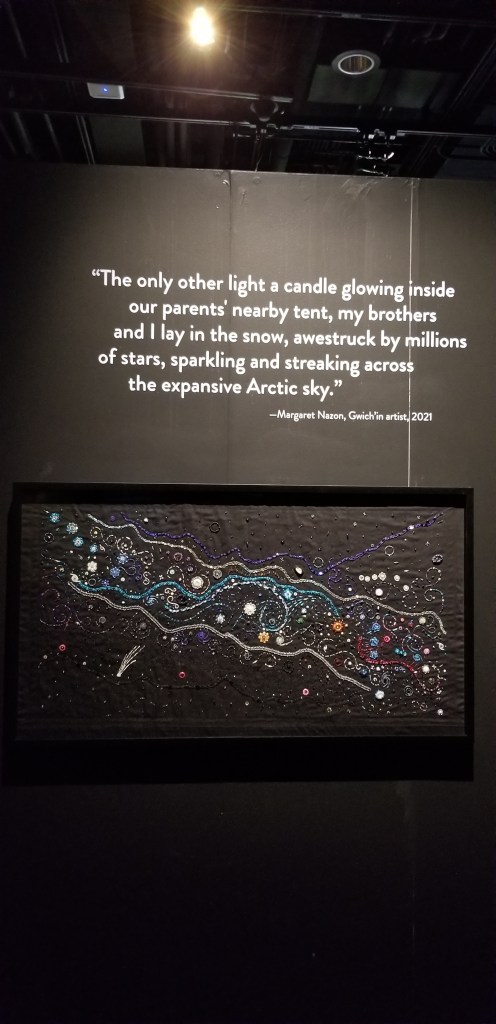
As we’d been told, it was displayed with the words Margaret and I had crafted together back in 2021. The exhibit display manager, Jill Johnson, wanted a description that would encapsulate Margaret’s feelings about gazing at the night sky. She recalled a winter memory from her childhood on the land, lying with her brothers on her back in the snow, looking up at the stars. Only later did Jill tell me we were limited to 32 words, which resulted in multiple phone calls and e-mails between Margaret and me, as I tried to pare down her words but preserve the images she’d shared. I quietly congratulated us both as I reread those words.
To the right of Margaret’s image was a virtual depiction of Van Gogh’s Starry Night, with a touch screen that allowed visitors to see how the sky he’d painted would look now as a result of light pollution.
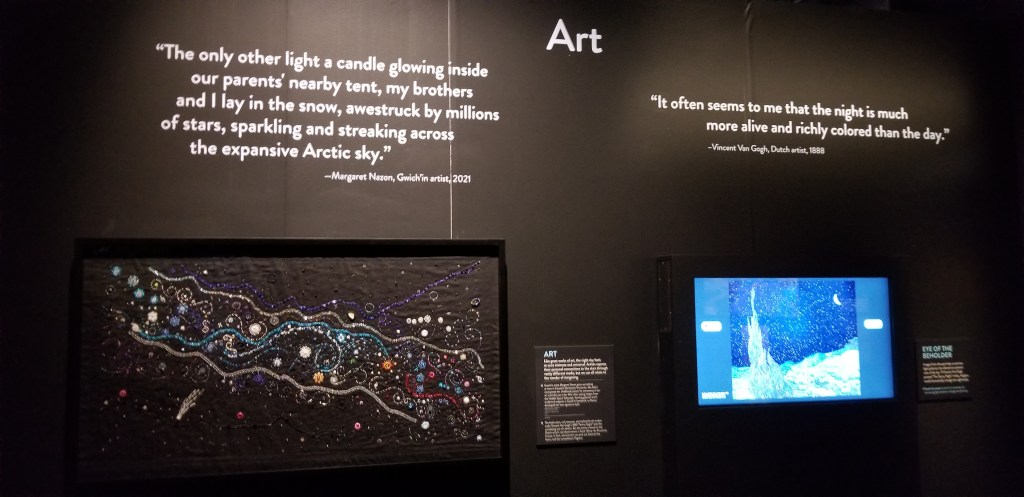
But for me, Margaret’s beadwork was the real star of the show. I viewed it from a variety of angles, up close, far away, from right and left, wobbling my head to make the beads sparkle. I noticed all the bits and pieces she’d included – the shooting star, the constellations, the cross section of caribou antler, the silver sweeps of light that seem to border the Milky Way.

I remember the exhibit manager’s shock when she found out that Margaret had completed the piece in only three months. I recall how we had to collaborate to get the piece to DC during the height of COVID – Margaret shipping it to me in a mailing tube; me sending it on via Fedex to the Smithsonian Support Centre, where it languished for far too long because the contract for the one conservator allowed into the building to touch it had not been renewed. It then had to be isolated in a refrigerator for two weeks to ensure it wasn’t bringing in any pesky insects (a laugh because it was shipped from the Arctic in November). Stephen Loring told me that the conservators had worried how to safely remove a small piece of masking tape stuck to the back of the piece. The exhibit people didn’t get to see even a photograph of Margaret’s work until six months after it arrived, and didn’t see it in person until it had been glassed, framed and ready for display.
I lingered for a long time, drinking in the piece’s beauty, and the memories it brought back. Somehow, I didn’t want to leave it, so I asked one of the first visitors to arrive if he’d take a picture of me with it. As more people, especially teens and children showed up, their harried parents and teachers trying to keep them under control, I wondered how they’d respond. The teens took photos, and the children reached out to touch it, disappointed that they couldn’t feel the beads.
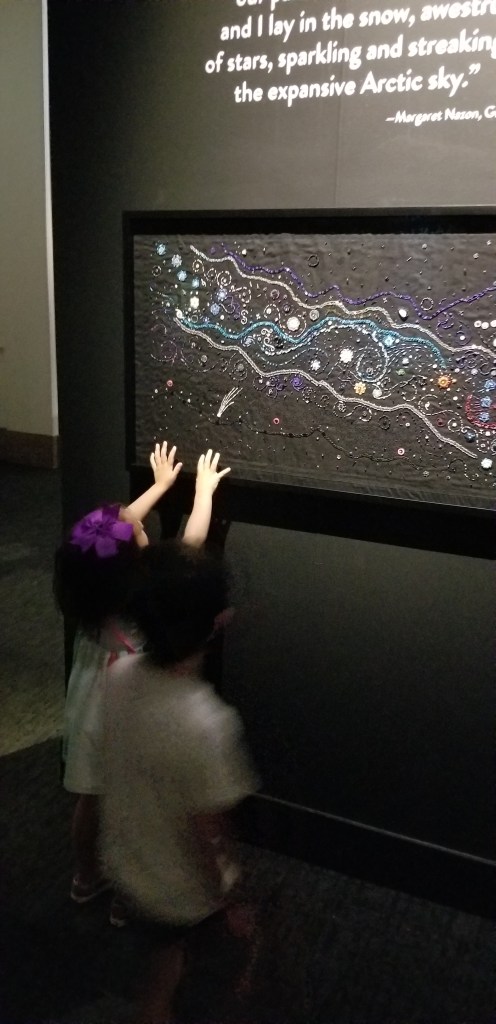
Only a few people stopped to experience it the way I had, but I got that: it’s spring break in DC, so the crowds seemed to keep people moving. Once this week is over, I expect there will be guided tours that will encourage people to look at Margaret’s piece more thoughtfully, maybe even to explore her art and to seek out their own dark skies to experience.
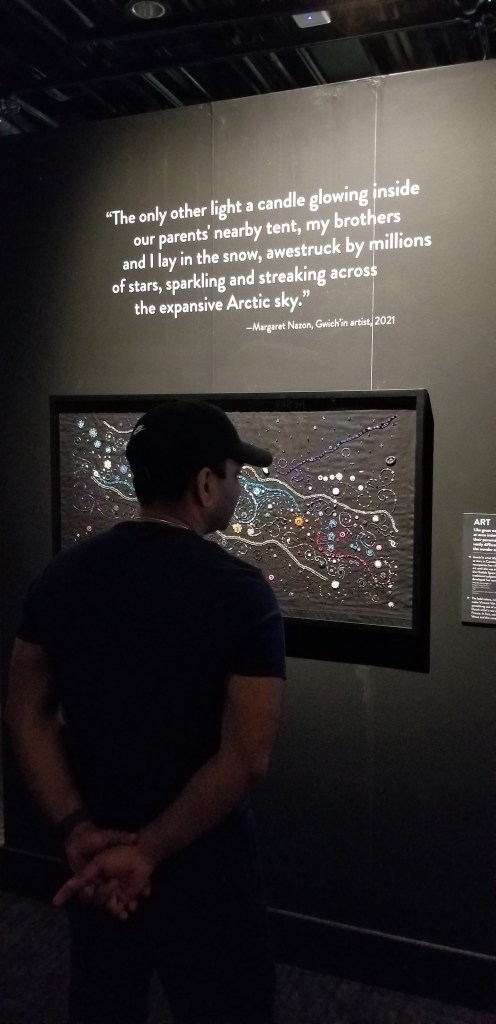
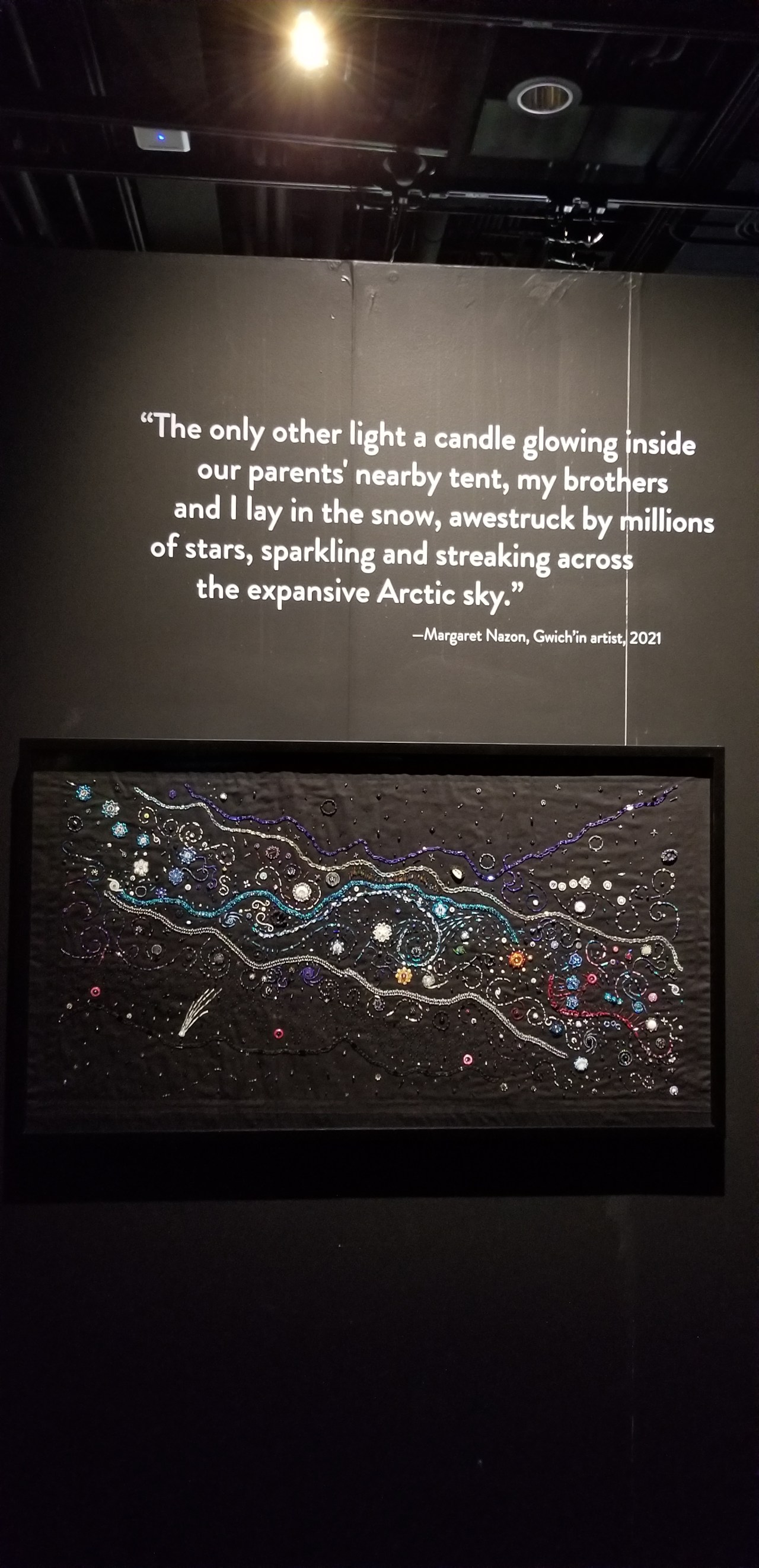
I’m proud of both of you too! What an amazing piece of work.
Deb
LikeLike
Yes, it was a huge rush to see the completed piece and people’s responses to it.
LikeLike
I read this at work this morning and have tears in my eyes. I know Margaret has gone through a few really rough years, and I hope you has some sense of how big a deal this is, and how much impact her beautiful bead work will have on so many people. The words you came up with together were soul stirring – anyone who has spent a night in the deep north will understand those words in their core. Great work by both of you – I am humbled before both of you.
LikeLike
I made a typo above and can’t find an edit button – I meant to say I hope “she” (Margaret) has some sense of how big a deal this is. I already know that you get it.
LikeLike
Thanks so, so much, Amy. I think Margaret is starting to realize how big a deal this is. Apparently, the Museum of Natural History is in the top 5 most visited museums in the US, so you can imagine how many people will see it. And after it goes off display, it will still be available to researchers who have access to the vaults. It will likely be Margaret’s swan song in terms of big, commissioned pieces. I can’t imagine a more crowning achievement.
LikeLike
Great article, Pam. I love piece Margaret has created. Where can we see more of her work in person?
LikeLike
Hi, Barb. Nice to hear from you. Margaret’s work is only on display right now at the Prince of Wales Northern Heritage Centre in Yellowknife ( 3 pieces), the Glenbow ( I know they bought a couple of her pieces – not sure if they’re still on display) , and the Ingenium in Ottawa ( 1 piece) . You’re right – her work is best appreciated in person so you can see it sparkle and appreciate all the detail. Her website is margaretnazon.com.
LikeLike